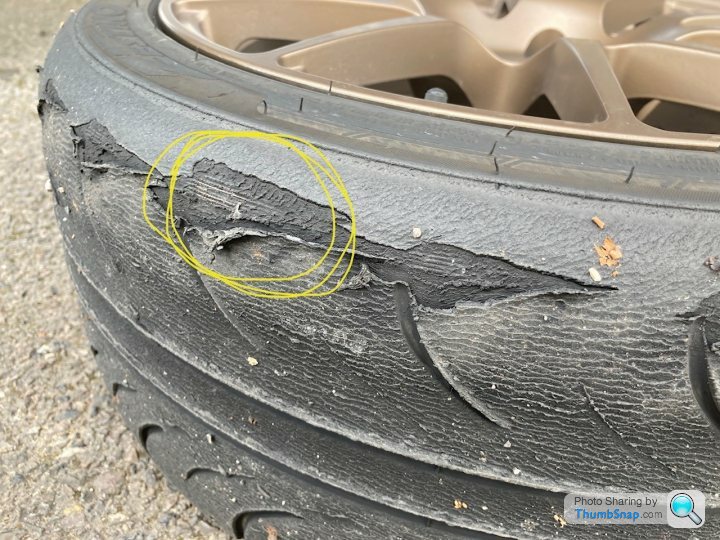All Categories
Featured
Table of Contents
The Michelin used a comfy driving experience, qualified by receptive guiding and a dynamic understeer balance. In spite of the cooler screening problems, Michelin's regular time and hold over 3 laps suggests its viability for real-world applications.
The tyre's very first lap was a 2nd slower than the second, aiming to a temperature-related grip rise. For day-to-day usage, the Michelin may be a safer wager.
Tyre Repair Near Me
It shared Michelin's risk-free understeer balance yet lacked the latter's desire to turn. Continental and Goodyear's performances were noteworthy, with Continental's new PremiumContact 7 showing a considerable improvement in damp problems contrasted to its precursor, the PC6. This model was much less delicate to fill adjustments and acted just like the Michelin, albeit with a little less communication at the restriction.
It combined the safe understeer equilibrium of the Michelin and Continental with some sporty handling, proving both foreseeable and fast. As an all-rounder for this Golf GTI, Goodyear's Asymmetric range was the standout, demonstrating remarkable efficiency in the wet. Ultimately, the Bridgestone Potenza Sporting activity took the crown as the fastest tyre, albeit by a small margin.
Drivers looking for an exciting wet drive might locate this tyre worth taking into consideration. The standout performer in wet braking was the newest tyre on examination, the PremiumContact 7, though the results are nuanced.
Leading Tyre Balancing Near Me – Swan
Ideally, we desired the cool temperature examination to be at around 5-7C, but logistical delays indicated we evaluated with a typical air temperature of 8C and water at 12C. While this was cooler than basic test problems, it was still warmer than real-world problems. The warm temperature level test was done at an average of 18C air and 19C water.
The third run included damp braking examinations on worn tires, especially those machined to 2mm with a little run-in. While we intended to do more with these worn tyres, climate restraints restricted our screening. Nonetheless, it's worth keeping in mind that wet braking is most crucial at the used state, as tires normally boost in dry conditions as they put on.

Bridgestone, Goodyear, and Michelin saw the least performance decrease when used. The Hankook tyre registered the tiniest efficiency decline as temperature levels cooled down, yet it was among the most impacted when put on.
Tyre Deals Near Me (Caversham)
The take-home message here is that no single tyre stood out in all facets of damp stopping, suggesting a complicated interplay of factors affecting tire efficiency under various problems. There was a standout tire in aquaplaning, the Continental ended up top in both straight and bent aquaplaning, with the Michelin and Goodyear additionally extremely great in deeper water.

Yokohama can gain from slightly even more grip, a concern possibly influenced by the colder problems. As for dealing with, all tires executed within a 2% range on the lap, demonstrating their high-quality efficiency (Tyre rotation). Nevertheless, considering these tyres essentially target the exact same customer, it's intriguing to observe the significant differences in feeling.
The surprise is because the PremiumContact 6 was among my favourites for sporty completely dry drives, yet its follower, the PremiumContact 7, appears elder and looks like Michelin's performance. Amongst these, Hankook was the least accurate in steering and communication at the restriction. Wheel balancing services. Both Michelin and Continental supplied beautiful preliminary steering, albeit not the fastest
If I were to advise a tyre for a fast lap to an amateur, say my papa, it would be just one of these. After that we have the 'enjoyable' tires, specifically Yokohama and Bridgestone. Both were quick to steer and felt sportier than the others, however the trade-off is a much more spirited back side, making them extra tough to deal with.
Tyre Replacement Near Me (Caversham WA)
It provided similar steering to Bridgestone yet supplied better comments at the limit and far better grasp. The Bridgestone Potenza Sport, however, seemed to deteriorate quite swiftly after simply three laps on this demanding circuit. Last but not least, there's Goodyear, which placed itself someplace between the enjoyable tyres and those having a tendency in the direction of understeer.
All in all, these tyres are outstanding performers. For road usage, I would certainly lean towards either the Michelin or Goodyear, depending on your details choices. In terms of tire wear, the approach used in this examination is what the industry refers to as the 'gold standard' of wear. The wear specialists at Dekra performed this test, which involved a convoy of automobiles going across a thoroughly planned route for 12,000 kilometres.
Both the Bridgestone and Yokohama tires significantly underperformed in comparison to the other 4 tires in regards to rolling resistance, with Continental slightly outshining the rest. Pertaining to the convenience level of the tyres, as expected, most demonstrated an inverted connection with handling. The Continental, Michelin, and Goodyear tyres carried out finest throughout various surface area kinds evaluated.

Bridgestone started to show indicators of firmness, while Yokohama was specifically jarring over craters. We did gauge internal noise degrees; nevertheless, as is frequently the instance, the outcomes were very closely matched, and due to weather constraints, we were unable to carry out a subjective evaluation of the tyres noise. Lastly, we considered abrasion figures, which measure the quantity of tyre walk lost per kilometre, normalised to a one-tonne automobile.
Tyre Fitting Services Near Me (Caversham WA)
This figure represents the amount of rubber dust your tires create while driving. Michelin led in this category, generating over 9% much less rubber particulate matter.
Latest Posts
Trusted Tyre Inspections
Top Long-lasting Tyres Near Me – Dayton WA
Leading Tyre Performance Near Me